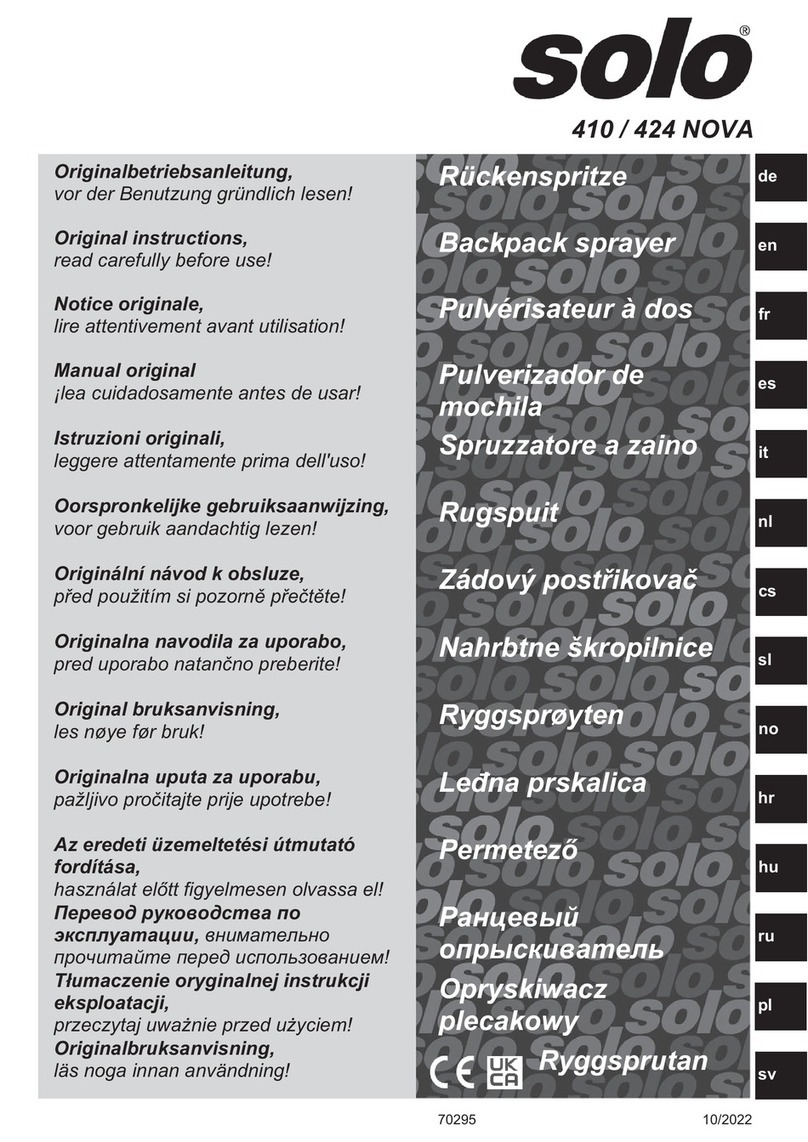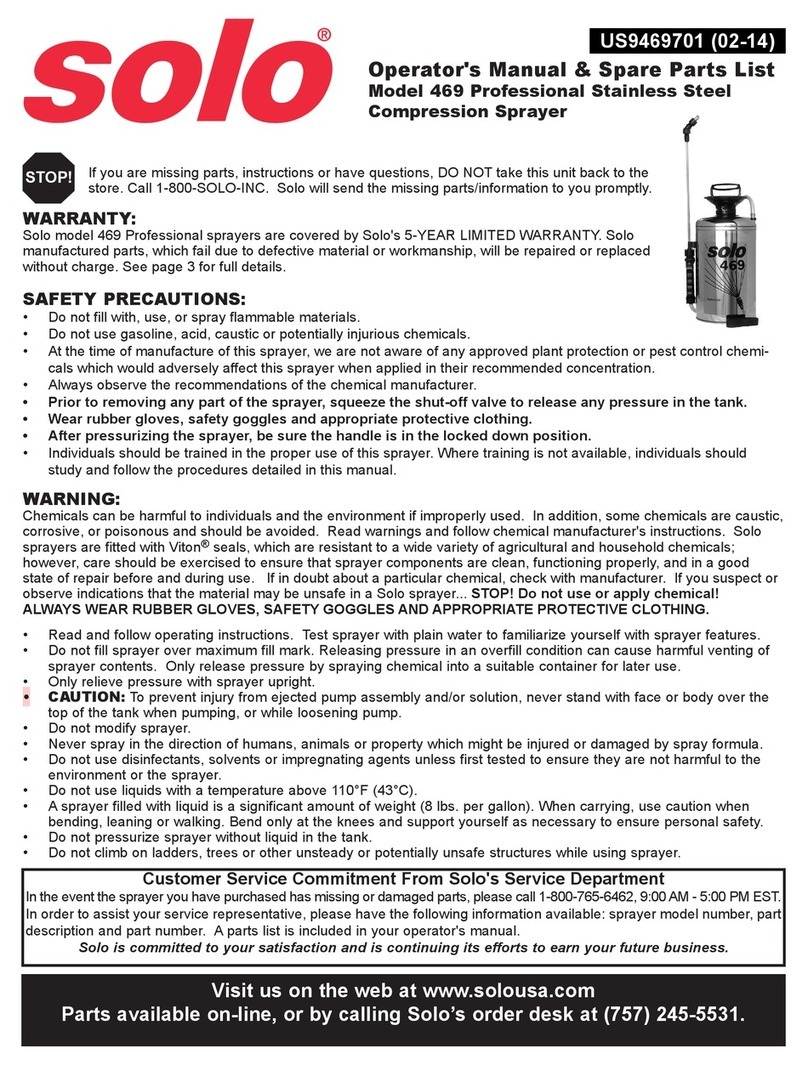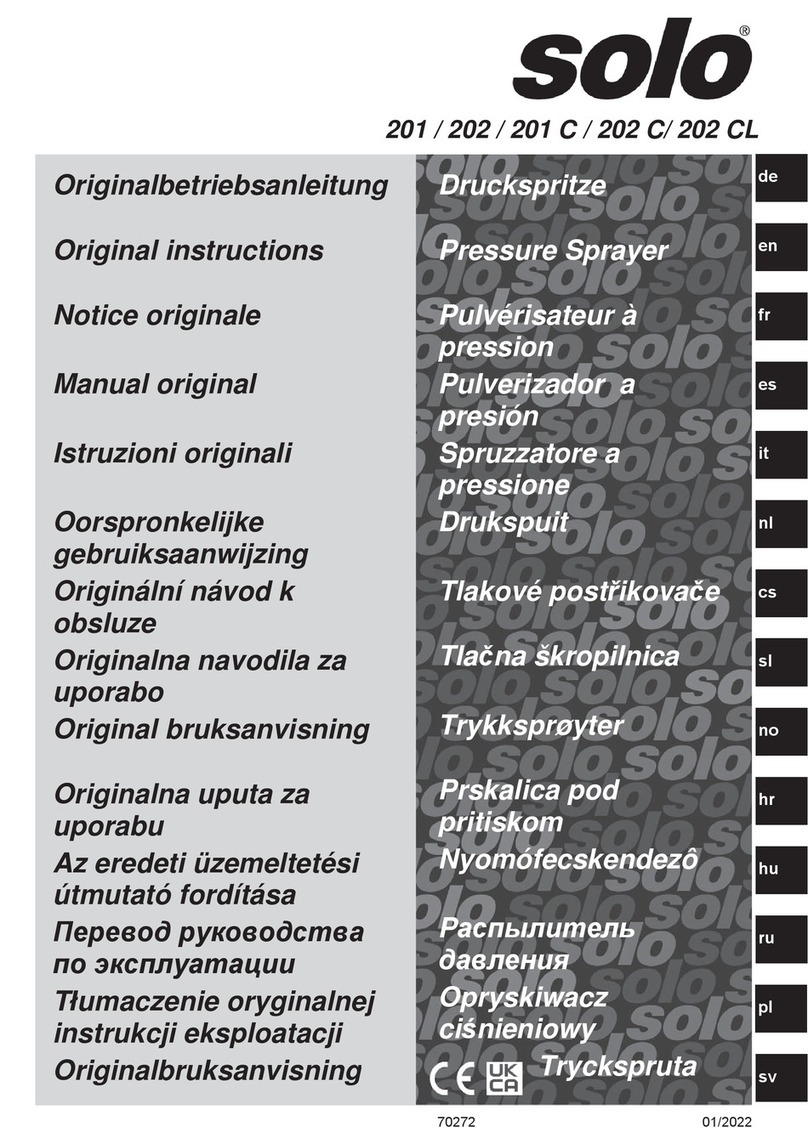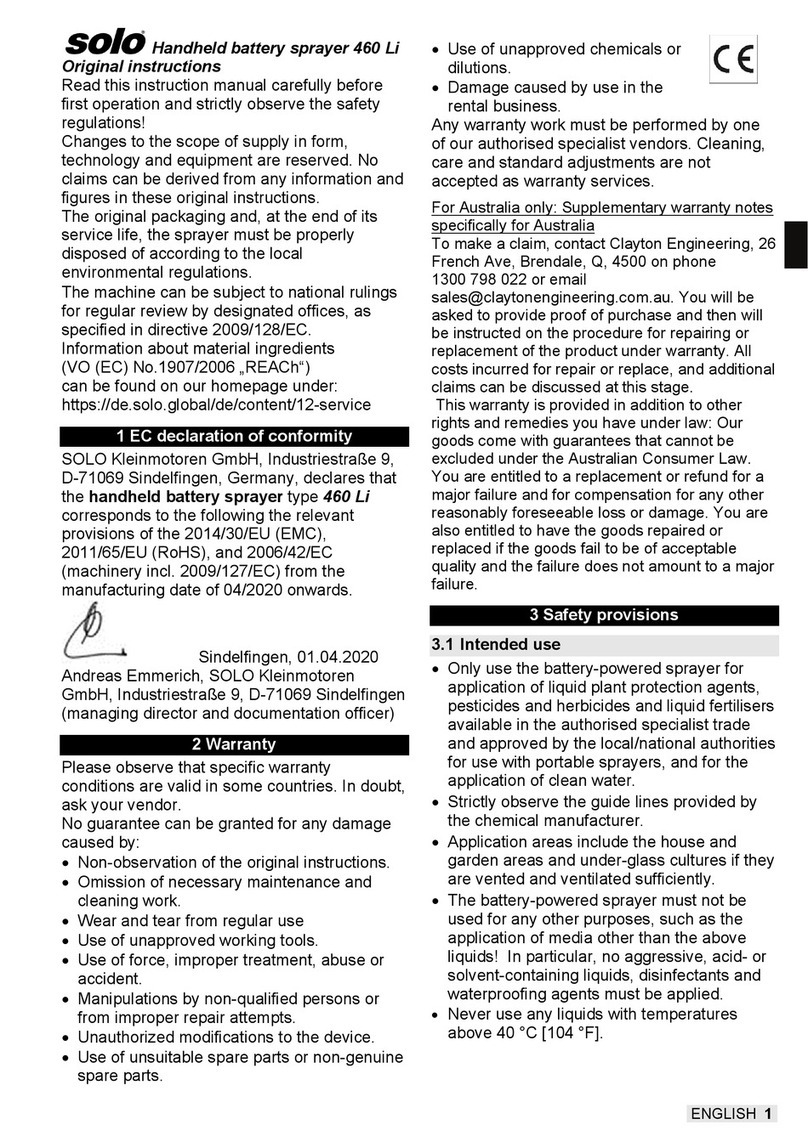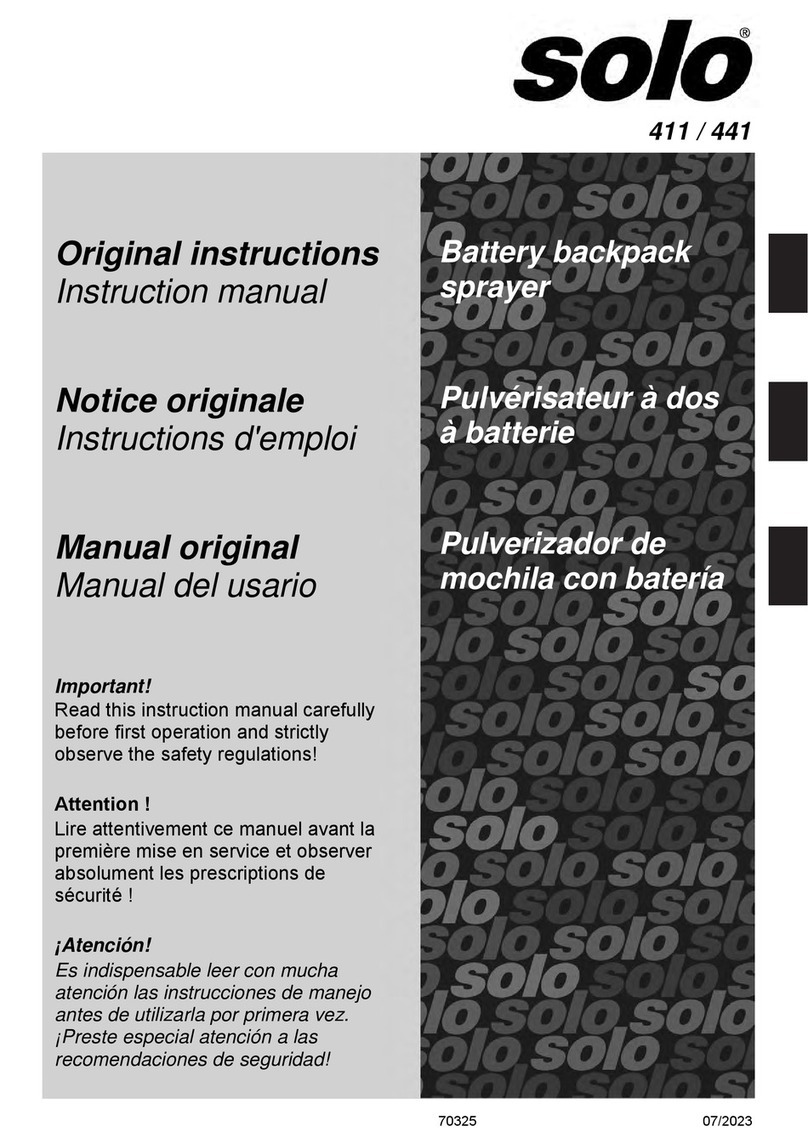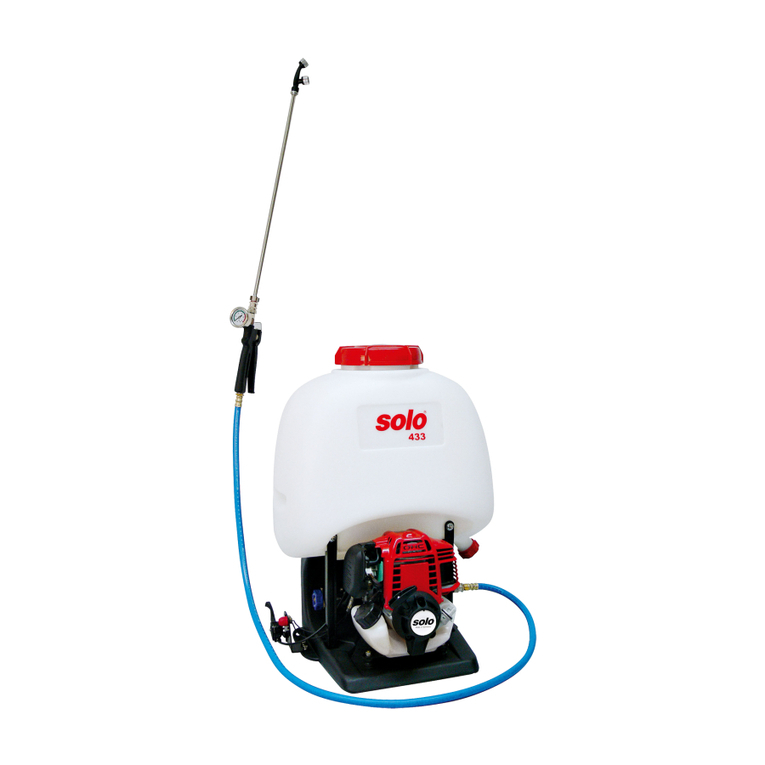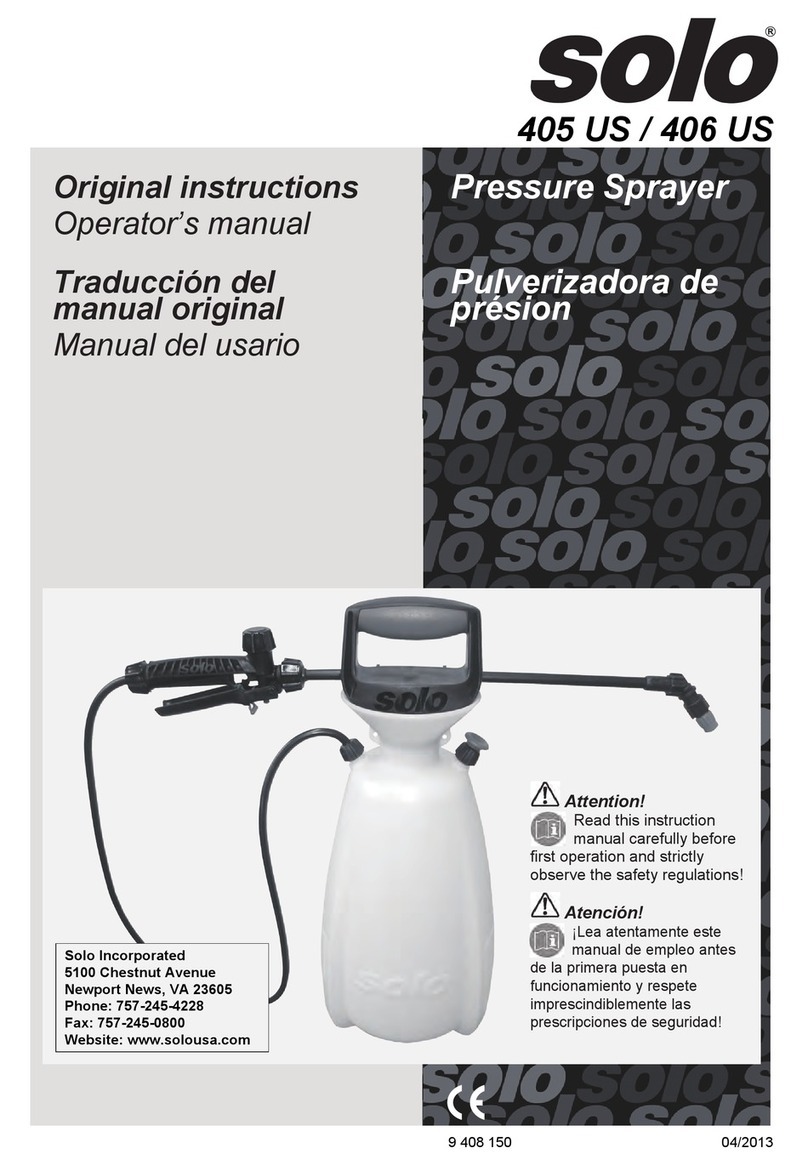
Index ; Workshop service, replacement parts ; Supplementary warranty notes specifically for Australia
ENGLISH 2
Index
Page
1. Workshop service, replacement parts...........2
1.1Maintenance and repair 2
1.2Replacement parts 2
2. Guarantee...........................................................3
3. Parts subject to tear and wear........................3
4. Safety regulations.............................................3
4.1Correct use / Application 3
4.2General safety instructions 4
4.3Personal protective equipment for
your safety 4
4.4Operating Hints 4
4.5Irregularities, incidents, accidents 5
4.6Safehandlingofsprayingagents 5
4.7Protection of Environment 5
5. Important Components.....................................6
6. Assembly of misting equipment.....................7
7. Adjustment of shoulder straps.......................7
8. Fuel information................................................8
9. Filling...................................................................8
10. Starting / Stopping the engine......................9
11. Operation hints..............................................10
11.1Misting Hints 10
11.2Spraying 10
11.3Residual spray medium 11
11.4Checking the spray medium flow
rate 11
11.5Draining and cleaning the tank 11
12. Maintenance and care...................................12
12.1Spark Plug 12
12.2Filter Maintenance 12
12.3Carburettor adjustment 13
12.4Storage Hints / Transport Hints 13
13. Maintenance Plan..........................................14
14. Technical Specifications..............................15
1. Workshop service, replacement parts
1.1 Maintenance and repair
Maintenance and repair of modern motorized
devices, as well as their safety-relevant
assemblies, require qualified, specialized training
and a workshop equipped with special tools and
test devices. Thus SOLO recommends that you
have a specialized SOLO workshop carry out all
work that is not described in these operating
instructions. Your SOLO specialist has the required
training, experience, and equipment at his disposal
to provide you with the most cost-effective solution
and can help you in many ways with advice and
service.
1.2 Replacement parts
Dependable operation and the safety of your
device also depend on the quality of the
replacement parts that you use. Use only original
SOLO replacement parts. Only original parts come
from the production of the device and thus
guarantee the highest possible material quality,
dimensional accuracy, function, and safety.
Original replacement parts and accessory parts are
available from your dealer. He also maintains the
requisite replacement part lists to determine the
required replacement part numbers, and he is
constantly provided with information concerning
detail improvements and innovations in the
replacement part offering. Please note as well that
guarantee performances from SOLO are not
possible if parts other than SOLO original parts are
used.
For Australia only: Supplementary warranty notes
specifically for Australia
To make a claim, contact Clayton Engineering, 26
French Ave, Brendale, Q, 4500 on phone 1300 798
You will be asked to provide proof of purchase and
then will be instructed on the procedure for
repairing or replacement of the product under
warranty. All costs incurred for repair or replace,
and additional claims can be discussed at this
stage.
This warranty is provided in addition to other rights
and remedies you have under law: Our goods
come with guarantees that cannot be excluded
under the Australian Consumer Law. You are
entitled to a replacement or refund for a major
failure and for compensation for any other
reasonably foreseeable loss or damage. You are
also entitled to have the goods repaired or
replaced if the goods fail to be of acceptable
quality and the failure does not amount to a major
failure.







